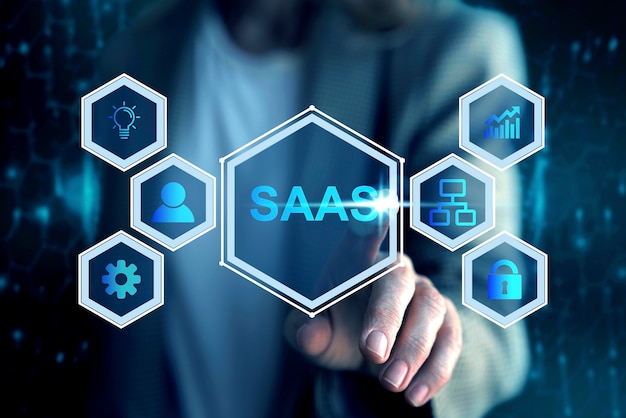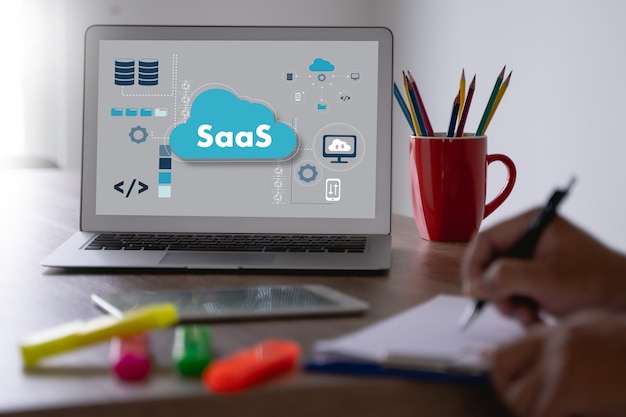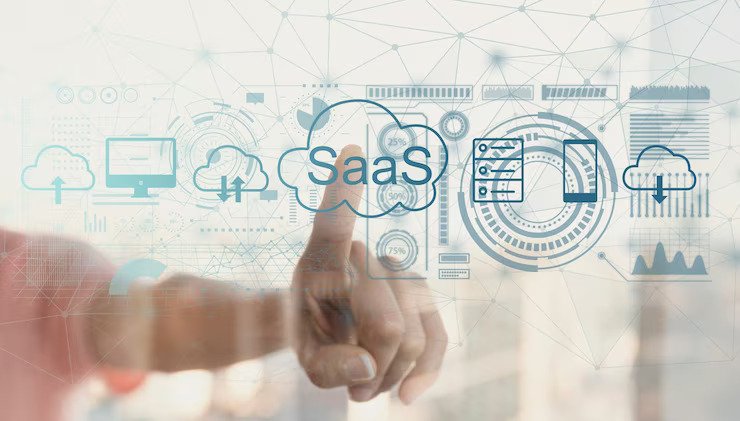For Software-as-a-Service (SaaS) businesses, growth is an essential component for success.
Whether you’re a startup looking to scale, or an established SaaS company seeking to expand your customer base, understanding how to drive growth is key. In this article, we’ll explore the MECE framework to provide a comprehensive guide on how to accelerate SaaS growth.
From defining key metrics to identifying growth levers, and from acquisition to retention and expansion, we’ll cover everything you need to know to drive your SaaS business forward. So, whether you’re a founder, marketer, or product manager, read on to discover how to unlock the full potential of your SaaS business and know about the saas growth hacks.
Defining SaaS Growth

In order to effectively drive growth for your SaaS business, it’s important to have a comprehensive understanding of key metrics and growth levers. This ebook on SaaS Growth
Hacks provide a wealth of practical tips and strategies to accelerate growth. Whether you’re a startup looking to scale or an established SaaS company seeking to expand your customer base, this article provides actionable steps to optimize your SaaS business’s growth potential. By incorporating these tips and strategies, you can take your SaaS business to new heights.
1. Monthly Recurring Revenue (MRR):
This is the total amount of revenue that your business generates each month from your customers’ subscriptions. It’s a key indicator of your saas growth business’s performance and saas growth marketing growth potential.
2. Annual Recurring Revenue (ARR):
Similar to MRR, ARR is the total amount of revenue that your business generates annually from your customers’ subscriptions.
3. Churn Rate:
The churn rate measures the percentage of customers who cancel their subscriptions during a given time period. It’s important to understand this metric because it can have a significant impact on your business’s revenue and growth potential.
4. Lifetime Value (LTV):
LTV is the total amount of revenue that a customer is expected to generate for your business over the course of their lifetime. It’s a key metric for understanding the profitability of your business and identifying opportunities for growth.
5. Customer Acquisition Cost (CAC):
CAC measures up the amount of money that your business spends to acquire a new customer. This metric is essential because it impacts your business’s profitability and growth potential.
In addition to understanding these key metrics for saas growth, it’s also important to understand the SaaS customer lifecycle. This includes the different stages that customers go through, from awareness to acquisition, onboarding, retention, and expansion. By understanding the SaaS customer lifecycle, you can identify opportunities to optimize each stage and drive growth.
Strategies For Driving SaaS Growth

Once you’ve defined the key metrics for SaaS growth and identified growth levers for your business, it’s time to develop specific strategies for driving growth.
Here are some effective strategies for acquiring customers and expanding your customer base:
Acquiring Customers
Understanding your ideal customer profile (ICP): In order to acquire new customers, it’s essential to understand who your ideal customer is. This includes factors such as demographics, industry, pain points, and preferences.
By developing a clear understanding of your ICP, you can create targeted marketing campaigns and content that speak directly to their needs and interests.
A. Developing a content strategy:
Content marketing is a powerful tool for acquiring new customers. By creating valuable content such as blog posts, e-books, and webinars, you can establish your business as a thought leader in your industry and attract new prospects to your website. It’s important to align your saas growth content strategy with your ICP to ensure that you’re creating content that resonates with your target audience.
B. Leveraging paid to advertise:
Paid advertising can be a highly effective way to acquire new customers. Platforms such as Google Ads and Facebook Ads allow you to target specific audiences with precision, and to track the performance of your campaigns in real-time. It’s important to develop a clear understanding of your target audience and to create compelling saas growth ad copy and visuals that drive conversions.
C. Building a referral program:
Referral programs are a great way to incentivize your existing customers to refer new customers to your business. By offering rewards such as discounts or free months of service, you can encourage your customers to spread the word about your business and bring in new leads.
It’s important to make the referral process as easy as possible for your customers and to track the performance of your program to ensure that it’s driving meaningful growth.
Converting Customers
Once you’ve acquired leads and generated interest in your product, it’s important to focus on converting these leads into paying customers.
Here are some effective strategies for optimizing your conversion rate and turning prospects into customers with proper saas growth.
A. Optimizing your landing pages and website:
Your website and landing pages are often the first impressions that prospects have of your saas growth business. It’s important to create a visually appealing and user-friendly website that provides a clear value proposition and encourages visitors to take action.
By optimizing your website and landing pages for conversion, you can increase the likelihood that prospects will become customers.
B. Creating a seamless onboarding process:
The onboarding process is critical for converting leads into paying customers. By creating a smooth and intuitive onboarding process, you can help new customers get up and running quickly and ensure that they’re able to fully experience the value of your product.
It’s important to provide clear guidance and support during the onboarding process and to follow up with customers to ensure that they’re successfully onboarded.
C. Implementing a pricing strategy:
Your pricing strategy can have a significant impact on your conversion rate. By experimenting with different pricing models and strategies, such as freemium or tiered pricing, you can optimize your pricing to maximize revenue while still appealing to your target audience. It’s important to regularly evaluate your pricing strategy and to make adjustments as needed based on customer feedback and market trends.
D. Developing customer success strategies:
Customer success is key to driving long-term growth for your SaaS growth business. By providing ongoing support and value to
your customers, you can increase the likelihood of customer retention and expansion. This includes strategies such as providing proactive support, offering customer training and resources, and regularly soliciting feedback and acting on it.
Retaining Customers
Once you’ve acquired and converted customers, it’s important to focus on retaining them over the long-term. Retaining customers is a key driver of saas growth businesses, as it can lead to increased revenue and reduced customer acquisition costs.
Here are some effective strategies for retaining customers and reducing churn:
A. Implementing retention tactics:
Retention tactics are the strategies and tactics that you can use to keep your customers engaged and happy with your product. This includes things like providing exceptional customer support, offering regular product updates and improvements, and soliciting feedback from customers to continuously improve your product.
By implementing effective retention tactics, you can increase the saas growth likelihood that your customers will continue using your product and will refer others to it.
B. Creating customer loyalty programs:
Customer loyalty programs are a great way to incentivize customers to stay with your business over the long term. This can include things like offering discounts, exclusive content, or other perks to customers who have been with your business for a certain amount of time or who have referred new customers to your saas growth business. By rewarding loyal customers, you can increase customer satisfaction and reduce churn.
C. Identifying and addressing churn risks:
Churn is a natural part of the SaaS business model, but it’s important to identify and address churn risks in order to minimize its impact. This includes saas growth monitoring key metrics such as churn rate and customer satisfaction, identifying at-risk customers, and proactively addressing their concerns.
By taking a data-driven approach to churn prevention, you can identify patterns and trends that can help you reduce churn over the long term.
Expanding Customers
Once you’ve successfully acquired, converted, and retained customers, it’s time to focus on expanding your customer base and increasing revenue.
Here are some effective strategies for expanding your customer base and driving revenue growth:
A. Identifying cross-sells and upsell opportunities:
Cross-selling and upselling are effective strategies for increasing revenue from your existing customer base. This involves identifying additional products or features that your customers may be interested in and offering them as add-ons or upgrades to their existing subscriptions.
By proactively identifying cross-sell and upsell opportunities with saas growth, you can increase customer satisfaction and drive revenue growth.
B. Developing a product roadmap:
A product roadmap is a strategic plan for the development and evolution of your product over time. By developing a clear product roadmap, you can identify new features and capabilities that will appeal to your target audience and help you stay ahead of the competition.
It’s important to solicit feedback from customers and to regularly evaluate the competitive landscape in order to refine your saas growth product roadmap over time.
C. Implementing new revenue streams:
Developing new revenue streams is a great way to diversify your business and increase your revenue potential. This can include things like offering new products or services, developing partnerships or integrations with other businesses, or exploring new pricing models or subscription plans.
By continuously innovating and experimenting with new revenue streams, you can drive long-term growth for your SaaS business.
Measuring And Optimizing SaaS Growth
To effectively drive growth for your SaaS business, it’s essential to take a data-driven approach. By measuring and analyzing key metrics, understanding customer feedback and behavior, and testing and optimizing your strategies over time, you can continuously improve your growth performance. Here are some effective strategies for measuring and optimizing SaaS growth:
Identifying and tracking key metrics: As we discussed earlier, there are several key metrics that are essential for measuring SaaS growth. It’s important to identify the metrics that are most relevant to your business and to track them regularly. By monitoring key metrics, you can identify trends and patterns and make data-driven decisions about where to focus your growth efforts.
A. Understanding customer feedback and data:
Customer feedback and data can provide valuable insights into how to improve your product and drive growth. This includes soliciting feedback from customers through surveys and reviews, analyzing customer behavior and usage data, and identifying areas for improvement or innovation. By taking a customer-centric approach to growth, you can ensure that your business is meeting the needs and preferences of your target audience.
B. Developing an A/B testing strategy:
A/B saas growth testing is a powerful tool for testing and optimizing different strategies and tactics. By testing different variations of landing pages, pricing models, marketing campaigns, and other elements, you can identify the approaches that are most effective for driving growth. It’s important to design your A/B tests carefully, with a clear hypothesis and a control group, and to use the results to make informed decisions about your growth strategy.
C. Analyzing and optimizing the customer journey:
The customer journey is the path that customers take from initial awareness to conversion and beyond. By analyzing the customer journey and identifying areas for improvement, you can optimize the customer experience and drive growth. This includes identifying saas growth friction points or obstacles in the journey and developing strategies to address them, such as improving the onboarding process or simplifying the user interface.
Conclusion
Growing a successful SaaS business requires a deep understanding of your target audience, the key metrics that drive growth, and the strategies and tactics that are most effective for each stage of the customer journey. By using the MECE framework and following the strategies outlined in this article, you can accelerate your SaaS growth and unlock the full potential of your business.
From acquiring customers and converting leads to retaining customers and expanding your customer base, every aspect of the SaaS growth process requires a data-driven and customer-centric approach.
By monitoring key metrics, understanding customer feedback and behavior, and constantly testing and optimizing your strategies, you can position your business for long-term success and sustainable growth.
Remember, the journey to accelerating your SaaS growth is a continuous process that requires dedication and a willingness to iterate and improve. By applying the strategies outlined in this guide and staying committed to driving growth, you can achieve your business goals and take your SaaS business to new heights.
Read Also:




























